Behind the Doors of Hiroshi in Los Altos
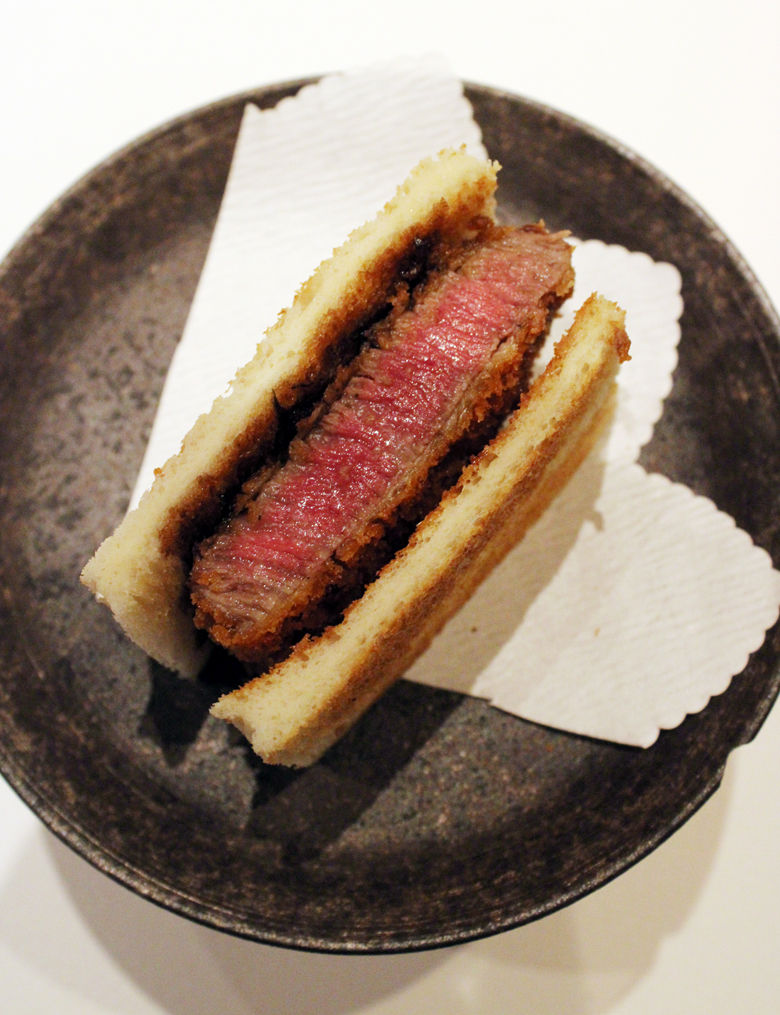
It’s a good bet that not many ordinary mortals have dined at Hiroshi in downtown Los Altos.
After all, when it opened its doors two years ago, it was easily staked a claim to being the most expensive and most exclusive restaurant in the Bay Area. That’s because the Japanese restaurant, which essentially acts as your own private restaurant, serves only eight diners per night — at $400 per person on up, excluding tax, tip and beverages. What’s more, whether you were a party of six, four or two, you had to pay the full price of eight diners.
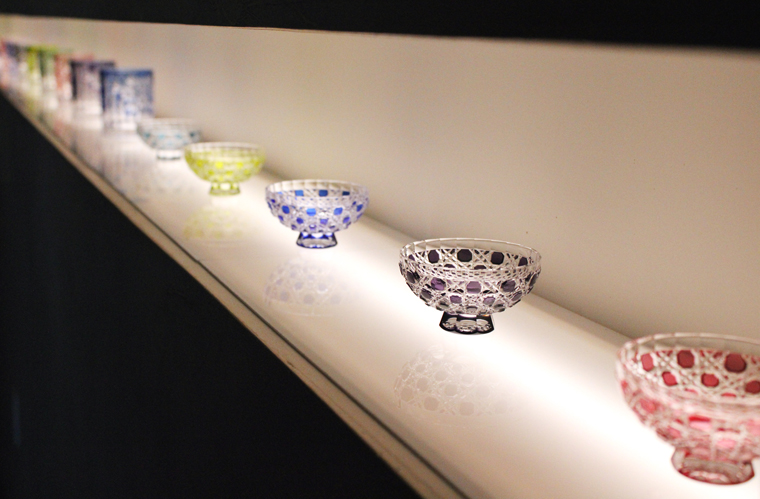
But Hiroshi recently changed that policy, making the restaurant more accessible and affordable. Well, sort of. The 10-course dinner now starts at $575 per person, exclusive of tax, tip, and beverages. But you need only a minimum of four diners to make a reservation now.
Owned by Chef Hiroshi Kimura and Japanese businessman Iwata Tsuyoshi, the restaurant has hosted the likes of Google co-founders Sergey Brin and Larry Page, as well as other tech titans.
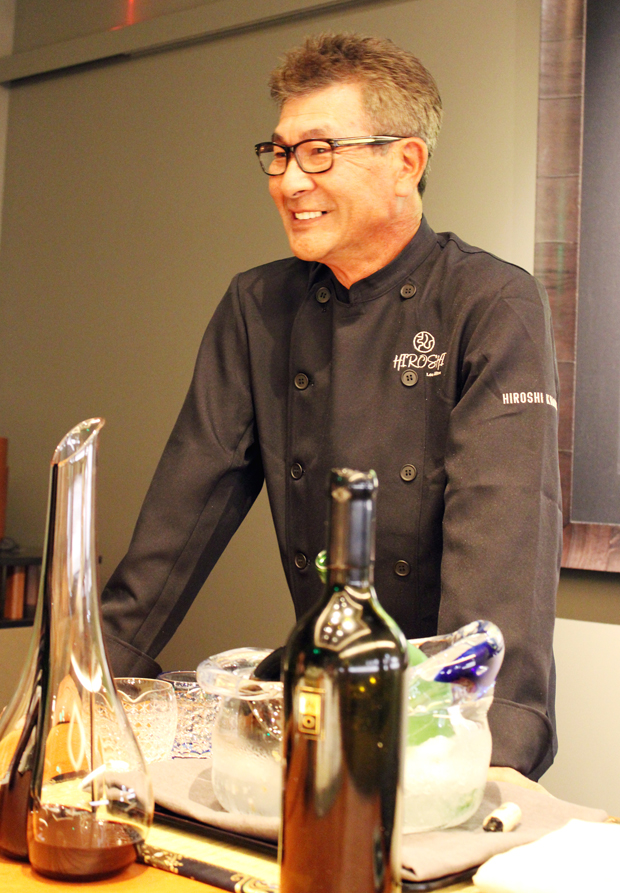
This summer, the chef hosted an intimate group of six food writers, including yours truly, to experience his traditional Japanese cuisine served against a backdrop of dazzling art and plateware in a serene dining room dominated by 16-foot raw-edge table, fashioned from an 800-year-old zelkova tree, the same type of wood used to construct Japanese temples.
The restaurant also sports one of the most beautiful bathrooms around. Sure, there is a $15,000 hand-carved lamp right outside. But what’s inside is the highlight — an infinity mirror with a tunnel of pink cherry blossoms that seem to go on forever. It was designed by Hisao Kurosawa, the son of legendary filmmaker Akira Kurosawa.
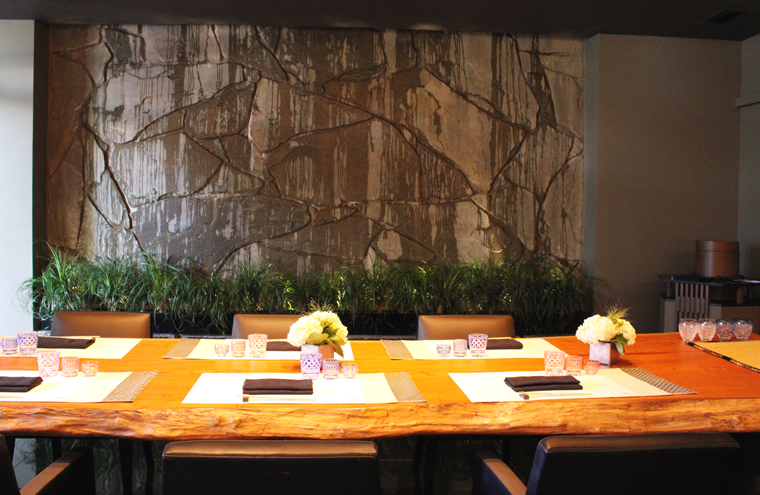
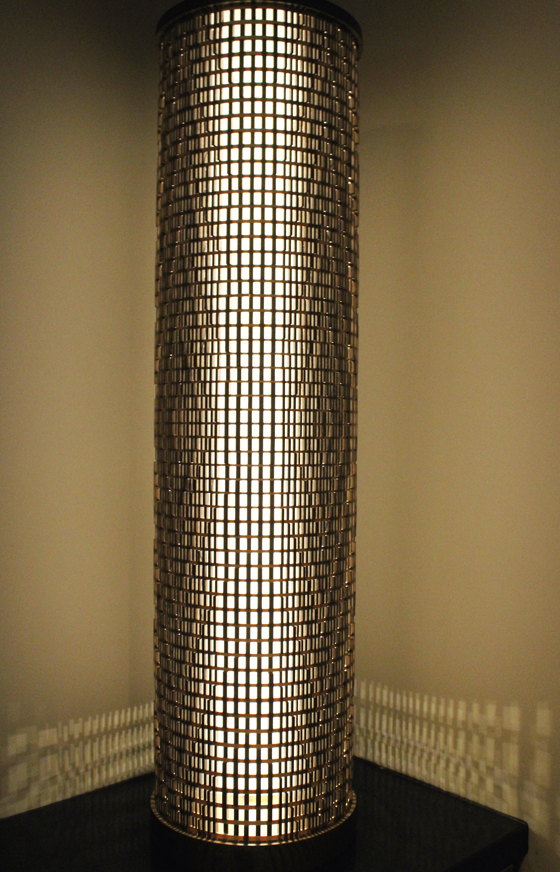
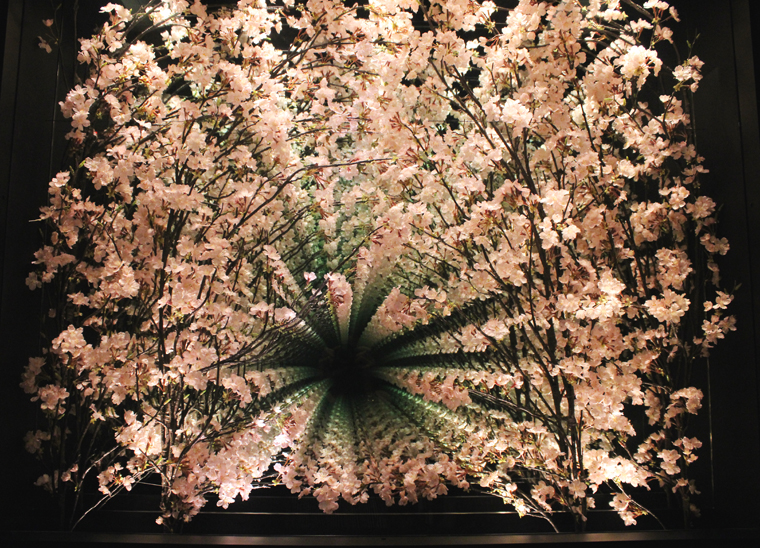
Kimura imports nearly all his ingredients from Japan and treats them with reverence.
Given that he was hosting members of the media, who are always time-pressed, he shortened the dining experience this time around, serving the first courses all together in a heavy wooden bento box, rather than one by one.
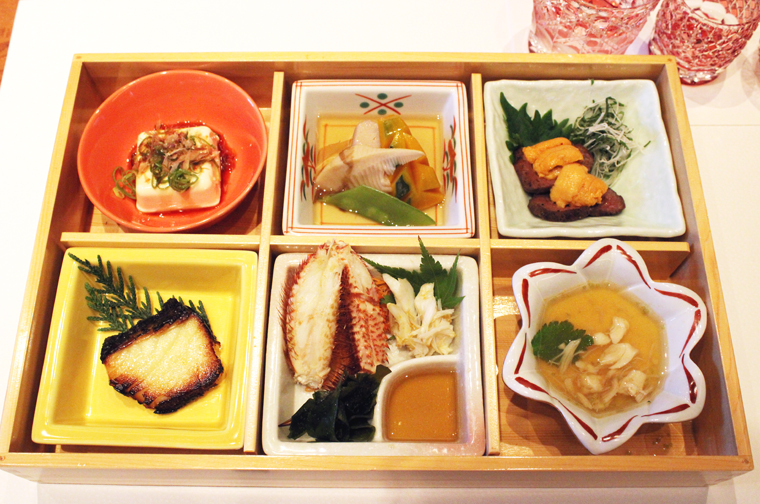
Inside were Hokkaido soft tofu garnished with a raft of freshly grated ginger and scallions, and a touch of soy sauce; dashi-simmered mountain yam and kabocha; meltingly tender Wagyu tataki served chilled with uni; a silky smooth chawanmushi with crab; hairy crab leg; and seared miso black cod.
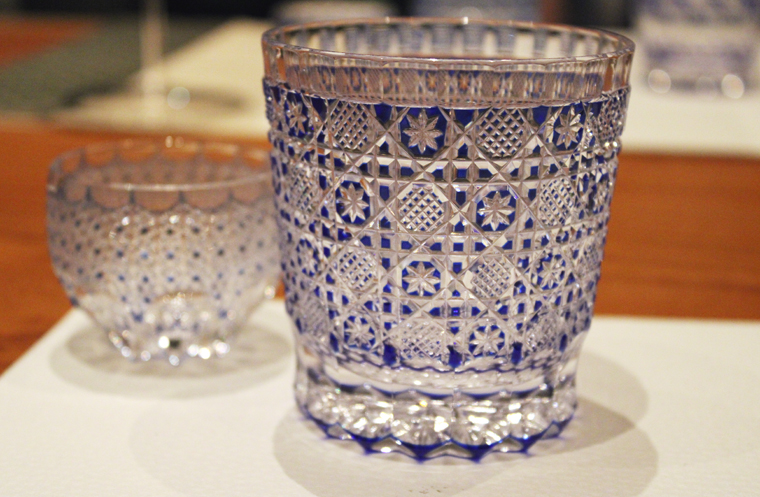
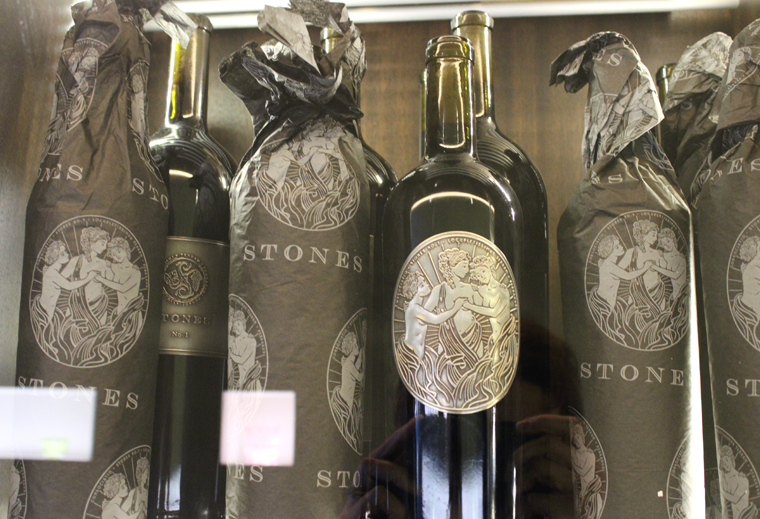

That was followed by tempura kisu (Japanese whiting) crowned with caviar. The crisp, lacy batter gave the very lean fish just enough richness.
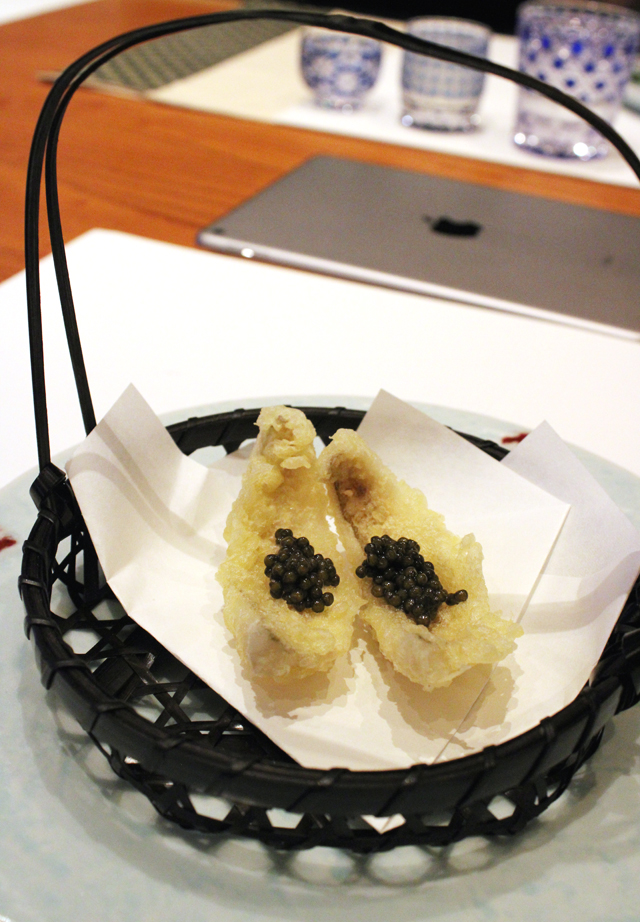
One of Kimura’s calling cards is a playful katsu sando, only instead of pork cutlet this soft white-bread sandwich envelopes fried Wagyu. It’s luxurious finger-food to the max.
For a palate cleanser, there is a yuzu sake “slushie” that’s bracing and citrusy like a Japenese version of limoncello.
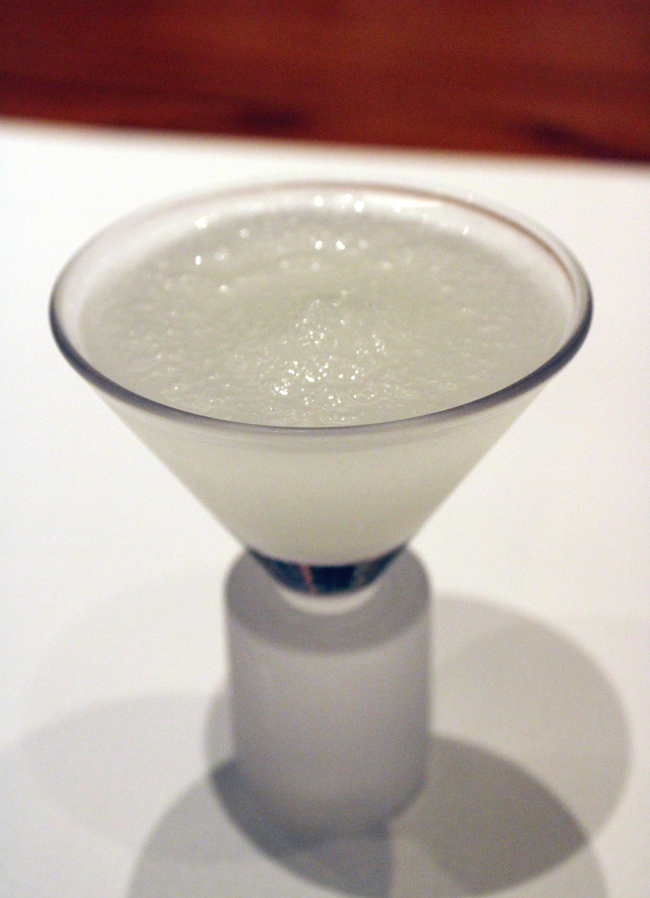
Next comes the salad course, a straightforward mix of greens enlivened by a creamy, intense-tasting sesame dressing.
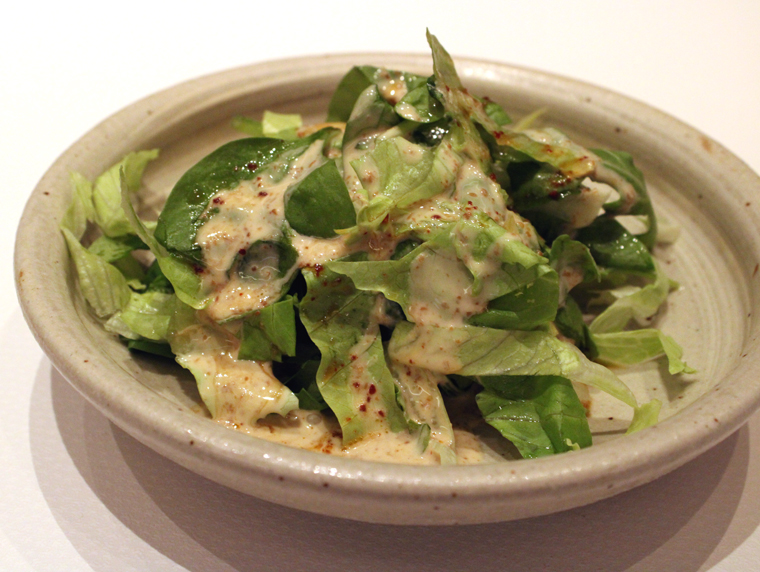
Then, comes the main event — Drunken A5 Wagyu, so named because the cows are fed sake lees to give a distinct sweetness to the meat. Kimura’s favorite way to enjoy this extremely marbled meat is to just grill it medium-rare with a little salt. But he knows other diners may prefer more accessorizing, so he serves the meat alongside Japanese wasabi, ponzu sauce, and truffle salt. Each diner also gets a mini hibachi grill at their place setting in case they want to warm the meat more.
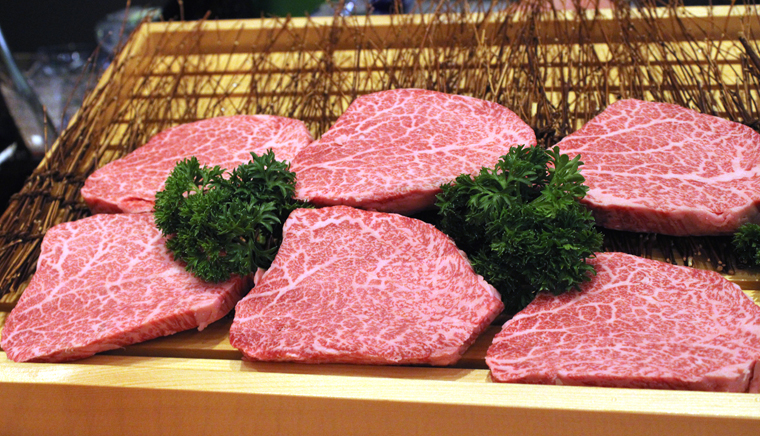
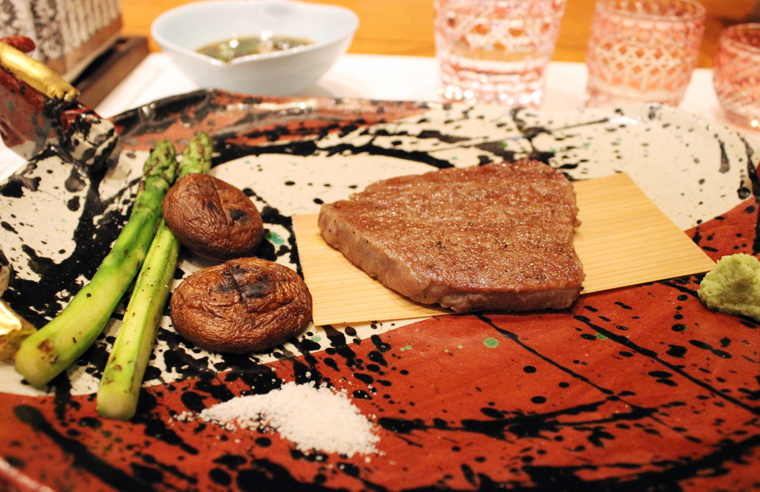
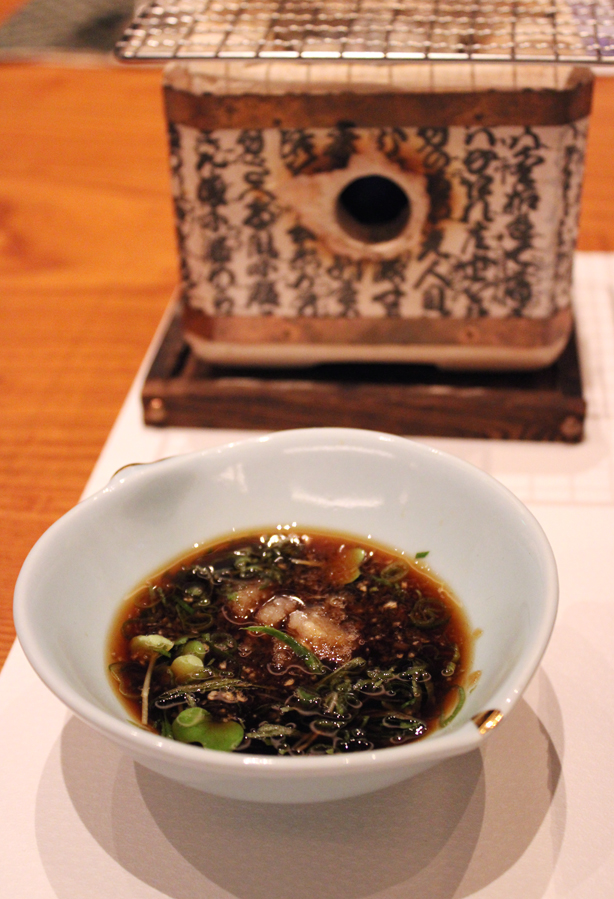
The meat has a subtle sweetness, and such a generous amount of integrated fat that your mouth is just coated deliriously in beef richness after one bite. The meat is so tender that you barely need a knife to cut it, too.
As a counterpoint to all that rich beef, the next course is cold somen, with the noodles afloat in a broth of dashi, soy sauce and sake.
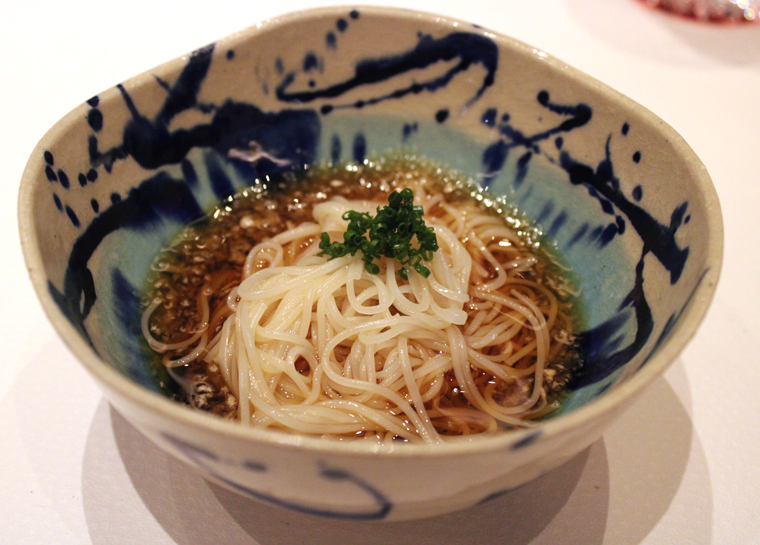
Dessert is simple: Kyoho grapes on a gold dish. The large grapes have a deep fruitiness almost like Concord ones with thinner yet still fairly tannic skins. The fruit arrives with a monaka, two fragile, thin wafers made of mochi that typically are sandwiched around a filling of red bean paste. But here, it was green tea ice cream instead. It was followed by soothing cups of sencha tea.
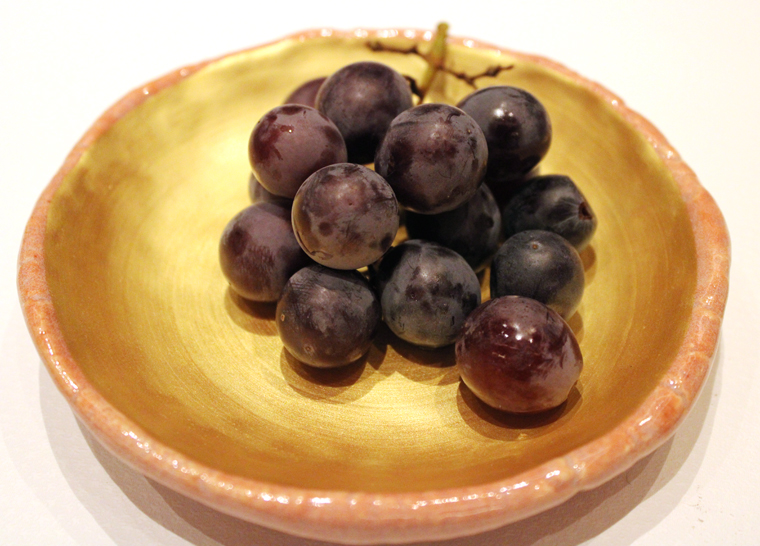
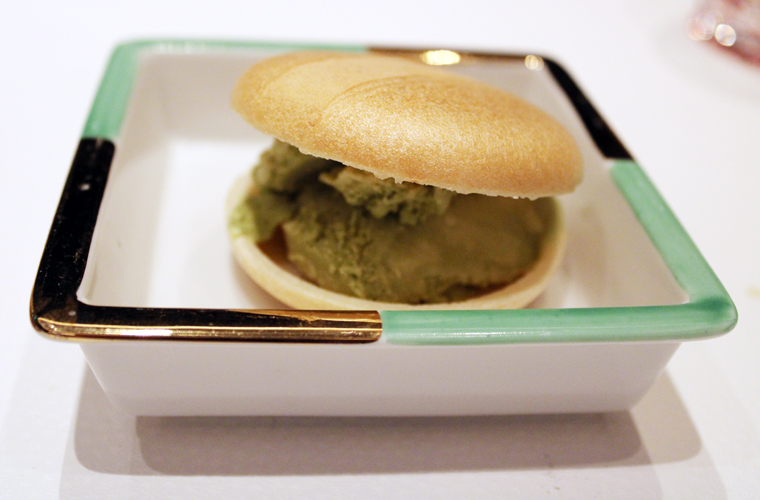
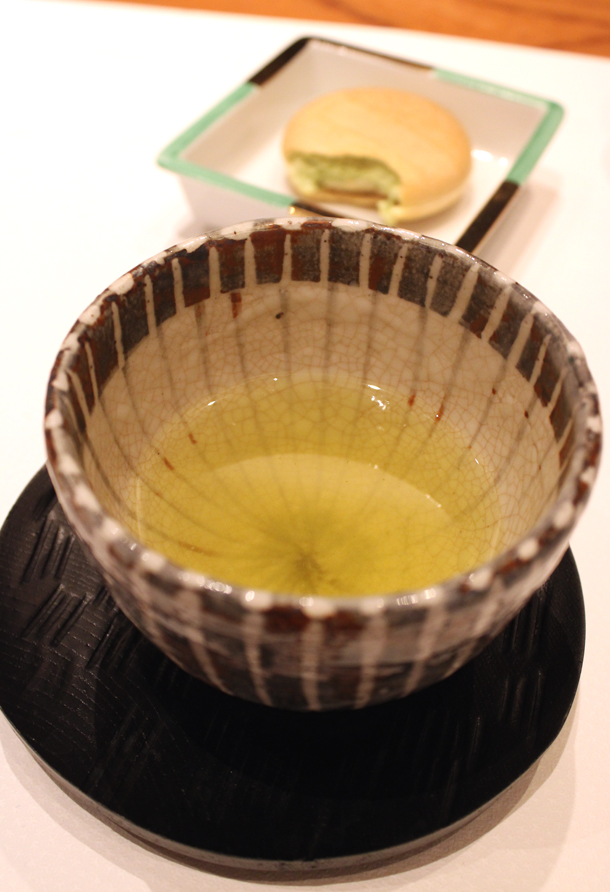
To learn more about Hiroshi and what you need to know to book a reservation, see my story. in this month’s issue of the Nob Hill Gazette.
